On 14 August, Samira Hassan joined Brownie Peter Pak for a Ramble thru’ Bukit Brown to Kopi Sua Cemetery .
It was Samira’s first visit and she penned these reflections to share.
“I doubt there are textbooks or academic sources that would be able to do justice to the arcane yet insightful details the places in Bukit Brown had revealed about our past – and these pieces of our tangible history are truly irreplaceable.”
by Samira Hassan
Dateline: Bukit Brown (14th August 2016)
We started the trail off the sidewalk on Lornie Road near a clearing just pass the turn in to Caldecott Hill. It would have been all too easy to miss it whilst walking – overgrown creepers had landscaped the steep steps that led us down the path to the trail. The steps themselves were uneven and rickety, an omnipresent feature in Bukit Brown’s landscape.
The cemetery is sprawled over 5 hills (blocks) as high ground was thought to represent the back of a dragon, an auspicious symbol in Chinese culture.
We first made our way to the tomb of Lim Kee Tong and his wife.
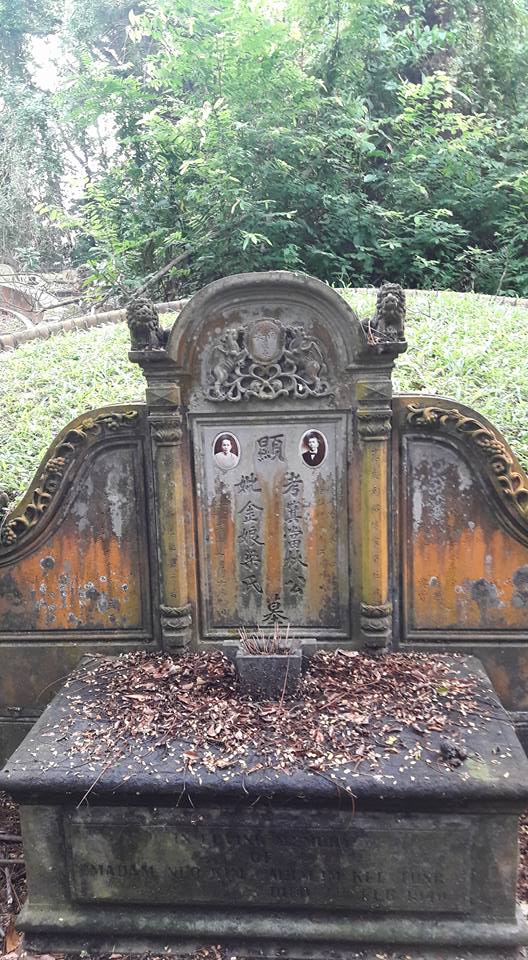
Grave of Mr and Mrs Lim Kee Tong, note the grape vines on the border to the tombstone (photo Catherine Lim)
Their tombstone was largely inspired by post-modernist designs of colonial times with Chinese lions. A mound behind the tombstone is where they are buried, enclosed in a horseshoe shape defined by a brick border. Each feature on the tombstone it seems had its own specific meaning; for example, the vines of grapes at the border of the headstones, because of its seeds, signified the wish for many more generations to follow.
The horseshoe shape is also reminiscent of a womb, alluding to the circle of life. The design of the grave incorporates a drainage system which would direct rain water to flow to the bottom, an important component in fengshui. Water is “chi” or energy and also represents wealth. Diverting water away from the mound helps to stay the course of decomposition, although it is inevitable.
Inscriptions on the tombstones included names of the deceased, dates of death and place of origin. It was explained that sometimes posthumous auspicious names were given as mark of respect by the children. Names of children are also included in the inscriptions so it seems like each grave is family monument in itself. Features and inscriptions on each grave can reveal some aspect about the person’s life and hopes for the family.
And in Bukit Brown, every grave has a story to tell – even the grave of paupers. Moving into the pauper area of Bukit Brown, we learned of the rickshaw puller Low Nong Nong who died in clashes with police when rickshaw pullers went on strike and demonstrated against the increment of rickshaw rentals.
The other rickshaw coolies then pooled together enough money to buy Nong Nong a tombstone and a funeral to acknowledge his sacrifice. In the midst of the other *pauper tombstones where there was barely enough money to erect a simple headstone, Nong Nong’s tombstone was comparable in size to the tombs in the paid plots and also because the mound itself had been cemented over, perhaps because his comrades realised that since he died without kith and kin, there would be no one to help maintain his grave should they themselves pass on or manage to make enough money to return home to China
*Under the colonial administration, free plots in Bukit Brown were set aside for those who died destitute
The fact that even paupers like this rickshaw puller had a story, had a voice, was something that I really appreciated in Bukit Brown: there was no particular class, or group of people, that were entitled to the plot of land, that all of these seemingly disparate narratives had managed to tell a bigger story of Singapore’s history. Such heterogeneity transcended into Ong Sam Leong’s tomb as well, the biggest one in Bukit Brown.
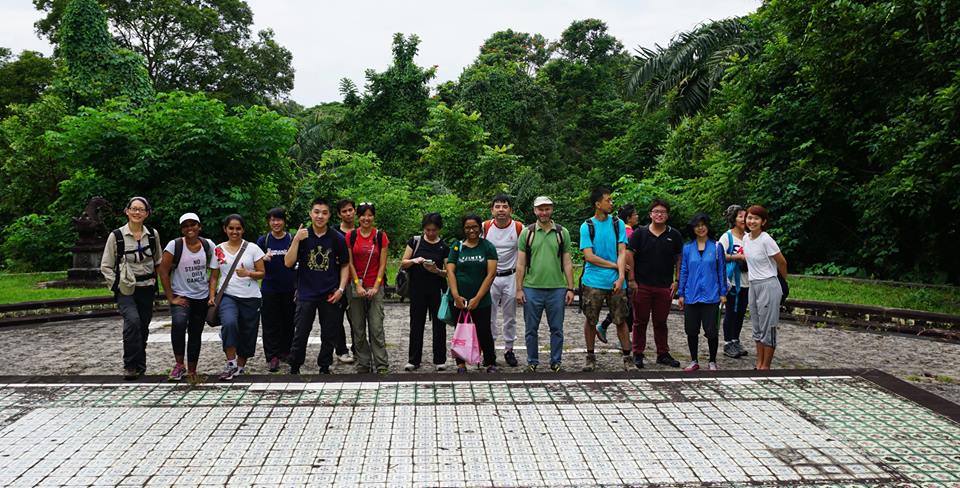
Group photo of ramblers at Ong Sam Leong’s grave, Samira is in the middle in green tshirt, carrying blue and pink tote bags (photo Peter Pak)
The most fascinating thing about his grave were the statues of the Punjabi guards stationed at each side. Around Malaya at that point in time, the British had recruited Punjabi soldiers and policemen from India. Given their positions of authority, they were almost seen as the “guardians of the state” They became also personal body guards of rich towkays such as Ong Sam Leong at a time where lawlessness was more prevalent. For me it demonstrated a deep level of trust between diverse communities and reflected a nascent multicultural society Singapore in the 1900s.

Sikh guards protecting a Chinese reformist fugitive from the Qing Dynasty, Kang You Wei when he sought refuge in Singapore. (Photo from Lai Chee Kien)
Bukit Brown has grown to be more than a resting place for the deceased – it has become a physical emblem of a society that was present in early 20th-century Singapore. From the most minute details in the tombs to the way the entire cemetery is organized – all of these provide important snippets to what civil society used to be like back then, I think this really goes to show that there is sometimes no alternative for trails and fieldwork such as this one.
I doubt there are textbooks or academic sources that would be able to do justice to the arcane yet insightful details the places in Bukit Brown had revealed about our past – and these pieces of our tangible history are truly irreplaceable.
=================
Samira is a year 5 student with Raffles Institution, who is currently serving an internship with Singapore Heritage Society to better understand the challenges of conservation and heritage development
Information on public guided walks when and where and how to register can be found by following Bukit Brown Events on Peatix
An update on this post as Jing Xiang has completed his Masters thesis
Abstract : Housed within Bukit Brown Cemetery are the many tombs of pre-independent Singapore pioneers with syncretic elements of a multicultural milieu. It remained a largely forgotten site except to families who visit the burial ground especially during the annual Qing Ming (tomb sweeping) festival.
In 2011, the state announced plans to redevelop Bukit Brown. Civil society groups, who saw the site as one rich in biodiversity and embedding an important historical past, contested the decision. This contestation rehearses a long-standing tension between heritage and progress in Singapore. This dissertation recasts Bukit Brown Cemetery as a highly charged site where notions of identity and belonging are latent.
The dissertation argues for an understanding of this forgotten landscape as integral to the Singaporean psyche of home and nation. Using Benedict Anderson’s concept of imagined communities and Henri Lefebvre’s spatial trilectics as its theoretical
frameworks, this paper outlines the spatial taxonomies present in Bukit Brown, and how identity is produced and anchored in those spaces. The inquiry unfolds on two scales: the first is a micro-territorial scale where the spatial practices of the individual and domestic unit are studied in relation to the tombs and myths found within and around Bukit Brown. The second one looks at Bukit Brown as macro-territory dotted with cultural anchors signifying collective histories.
Taken together, these two scalar frames reveal the complex structures of individual and collective identity, and how such structures are still actively forming/reforming at the Bukit Brown Cemetery.
His thesis can be found here
=========================================
First Published on the blog on 20 August, 2014
Some elements in the drawing are all too familiar landmarks in the cemetery, while others suggest hidden secrets, or things that,as of the present moment, has disappeared due to the roadworks. The drawing straddles between what is real and what is imagined, what is there and what is not there, or ‘not there’ because we can’t see it (yet) like other intangible (forces or) values of Bukit Brown.
(please click to view and appreciate full image)
By Zhang Jiayi
In the early afternoon last Sunday (2 August, 2015) I dreaded my decision to go for a guided walk around Bukit Brown cemetery. However, I have promised my friends that I will turn up, so grudgingly, I made my way to the meeting point for the walking tour. Three hours and a lot of mosquito bites later, it is a decision that I did not regret.
Tombstones don’t lie. All aspects of the tombs – from the layout, the materials used, the carvings and statues around the tomb – give us snippets of information about the individuals and the Chinese immigrant community in early Singapore. The tour shed light on the stories of the individuals; after the tour, the occupants of Bukit Brown turned from random people to dignified individuals who made a difference to the social reality we experience today. Our history and social studies curriculum doesn’t do justice to the various individuals who made a difference to Singapore. While we know a significant bit about Tan Tock Seng, we overlooked the contributions of his eldest son, Tan Kim Ching, who is also buried in Bukit Brown. Tan Kim Ching not only participated actively in philanthropy, just like how Tan Tock Seng did, he also had a close relationship with the royal family of Siam (known as Thailand now), and played an important role in diplomatic relations between the Straits Settlements and Siam. It is also to my surprise that the 72nd generation of Confucius also set foot in Singapore, and is also buried in Bukit Brown cemetery *.
The diversity of the ‘residents’ of Bukit Brown was jaw dropping. Tombs of Hokkiens, Teochews, Cantonese, men, women, the rich and the poor can be found in Bukit Brown cemetery. A range of calendars was used in the inscriptions of headstones in documenting the time of birth and death of individuals. Some Chinese pledged allegiance to the Ming dynasty of China and at their time of death dreaded the fact that they would be buried in a foreign land, while others were content to call Singapore home and to be buried here. I saw for myself the intricate Peranakan tiles laying some of the tombs of wealthy Peranakan Chinese, who chose to be buried in Bukit Brown as they did not identify with their Chinese dialect clans. It was also fascinating to gain an insight on how the early Chinese viewed death – many of them viewed their tombs as their homes in afterlife, and the layout of the tombs resembled the layout of homes. Much thought was put into the building of tombs; some tombs had carvings transmitting values like filial piety, some had intricate statues symbolizing prosperity, fertility and abundance, while other had inscriptions revealing how they felt when they were buried in Singapore. The trip was especially meaningful for me, as a female.
I learned more about the contributions of early Chinese women to the cause of gender equality we have today. Ms Lee Choo Neo, the founder of a Chinese Ladies Association, lobbied for the right of females to live a more enriching life. The Association taught domestic skills, supported education for females, and sponsored a rescue home for women. She was in her teens when she started these big projects. She can be rightfully known as, according to my understanding, the grandmother of the civil society in Singapore. The experience exposed how much I didn’t know about the history of Singapore, beyond what was taught in our social studies and history textbooks. I was deeply humbled by the number of times I widened my eyes in surprise as the volunteer guides (Brownies) dropped nuggets of trivia about prominent early Chinese immigrants. There is just so much the cemetery revealed about who we are as Singaporeans before Singapore’s independence, and the place unjustified the sweeping claims about how Singapore is ‘cultureless’.
As we celebrate 50 years of Singapore’s independence, let us remember, as the guides rightly pointed out, that it is also our 70th year of liberation from the Japanese Occupation, and almost a century from the time we were first part of the Straits Settlements. It is my hope that the stories told during the tour are documented and made available to a wider audience, lest our social history be like those resting in Bukit Brown cemetery – buried six feet underground, never to be seen or heard by the future generations of Singaporeans.
*Editors Clarification: The 72nd direct descendant of Confucius had prepared his grave with the intention of being buried beside this wife who passed away before him, but he was buried at Bidadari instead. We thank Jiayi for taking time to pen her thoughts on her first visit to Bukit Brown and invite anyone who would like to contribute a blog post to write to a.t.bukitbrown@gmail.com. For information on guided walks please visit bukitbrown.com for weekly updates.
About Jiayi: Jiayi is a young Singaporean still in search of what makes her Singaporean. She is interested in issues relating to the Singaporean society as a whole, including social stratification, education and national identity.
*********************************************************
The Penang Heritage Festival 2015 will be soon be upon us, mark your calenders 4th July to 7th July, book your flights and head north, for this year’s theme will leave you salivating.
‘EAT RITE: Rituals Foods of George Town’, Heritage Celebrations 2015 puts the focus on the city’s festive heritage with emphasis on the special foods made to celebrate each occasion. More than just a source of nutrients, such foods are rich with significance and symbolism that express the beliefs and hopes shared by the community.
The Brownies had a heritage blast last year and had their fill of the landmarks of Georgetown and the stories recounted here in:
To Penang With Love.
by Simone Lee
Penang and George Henry Brown (1826-1882)
Though at opposite ends of the Malayan peninsula, the islands of Penang and Singapore share common ground in culture and history, and even identity. Last year (2014) the Brownies set out exploring the connections with Singapore’s past while celebrating the Penang Heritage Festival in commemoration of George Town’s listing as a UNESCO Heritage site.
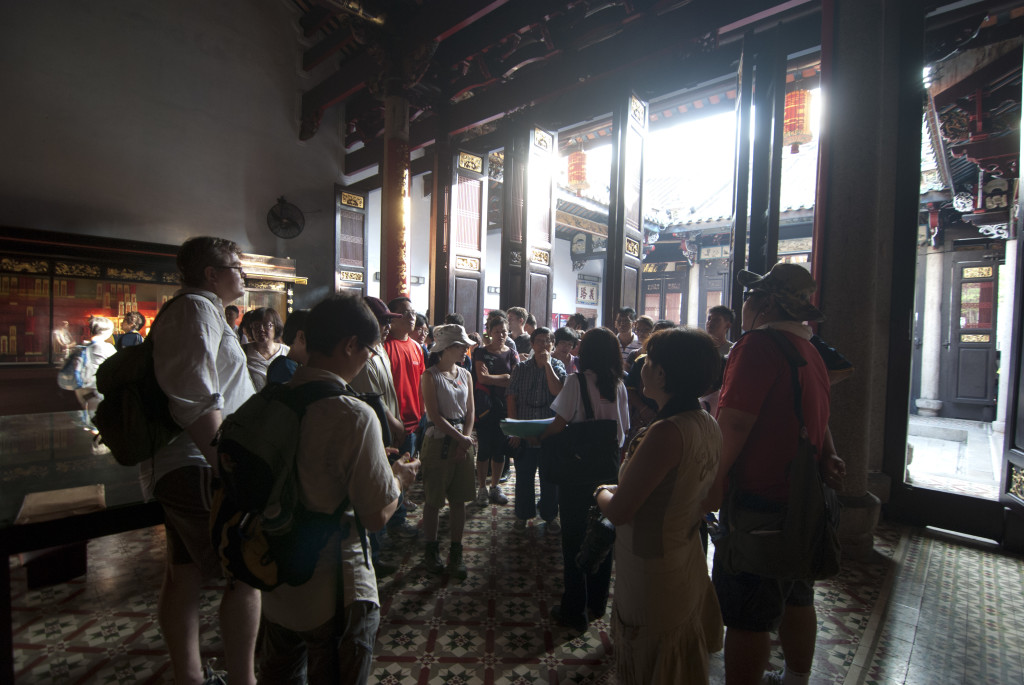
Brownies on a heritage tour during the Penang Heritage Festival. Photo taken at the Han Jiang Ancestral Temple
While the Bukit Brown Cemetery volunteer guides were in Penang, they paid homage to the person that the cemetery was named after. George Henry Brown arrived in Singapore in the 1840’s from India and bought parcels of land around Upper Thomson including Mount Pleasant, which he named because of its pleasant surroundings. Although Mr.Brown did not buy the exact piece of land that now holds Bukit Brown cemetery, his name was adopted as the locals referred to the hills in the area as “Kopi Sua” or Brown’s hill ( *kopi literally means coffee but is here referred to as brown for its colour, due to limitations in the dialect vocabulary.) In the 1880’s, Mr.Brown sailed to Penang following an accident with a tapioca machine on his estate in Singapore, which severely injured his arm. He was there to recuperate in his brother’s home but complications from injury set in and he passed away. He was buried at the Old Protestant Cemetery in GeorgeTown.
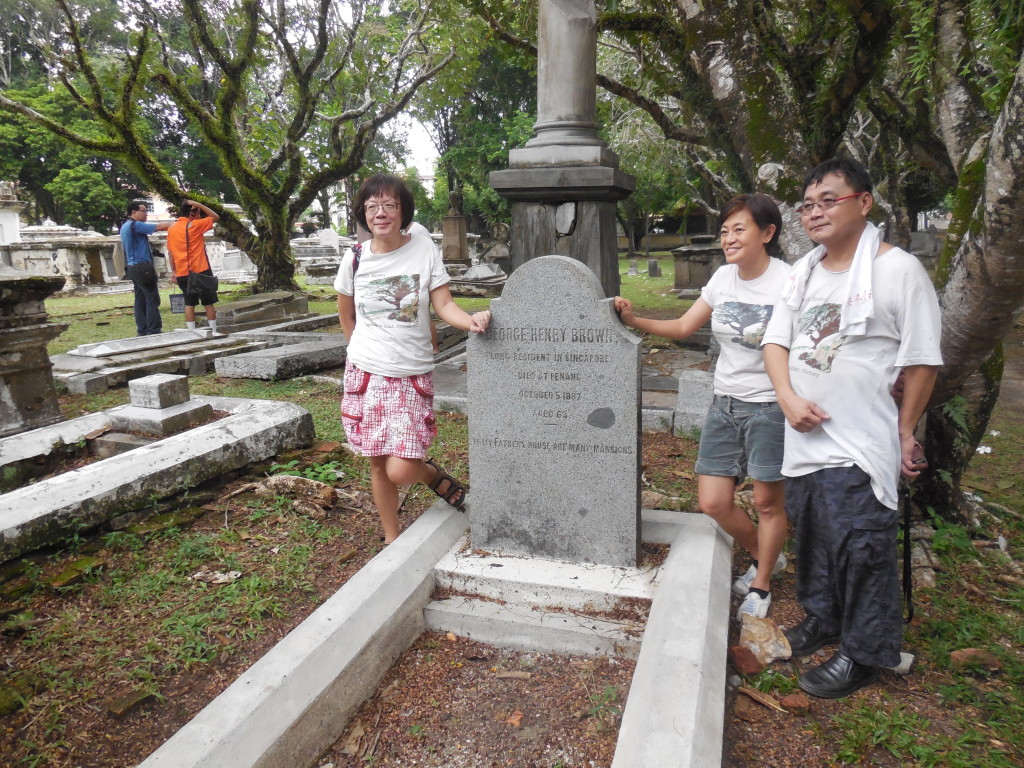
A moment of reflection and wonder for the Brownies at George Henry Brown’s resting place. Picture by Cuifen
The Old Protestant Cemetery is the oldest christian cemetery in Penang. It is where Sir Francis Light, the founder of colonial Penang, was also laid to rest. Thomas Leonowens, the husband of Anna Leonowens is also buried there. After the death of her husband, Anna moved to Singapore and with George Brown and Tan Kim Ching’s (son of Tan Tock Seng) recommendation, she became the English tutor to the children of King Mongkut in Siam. Her story is immortalized in various versions of The King and I (or Anna and the King).
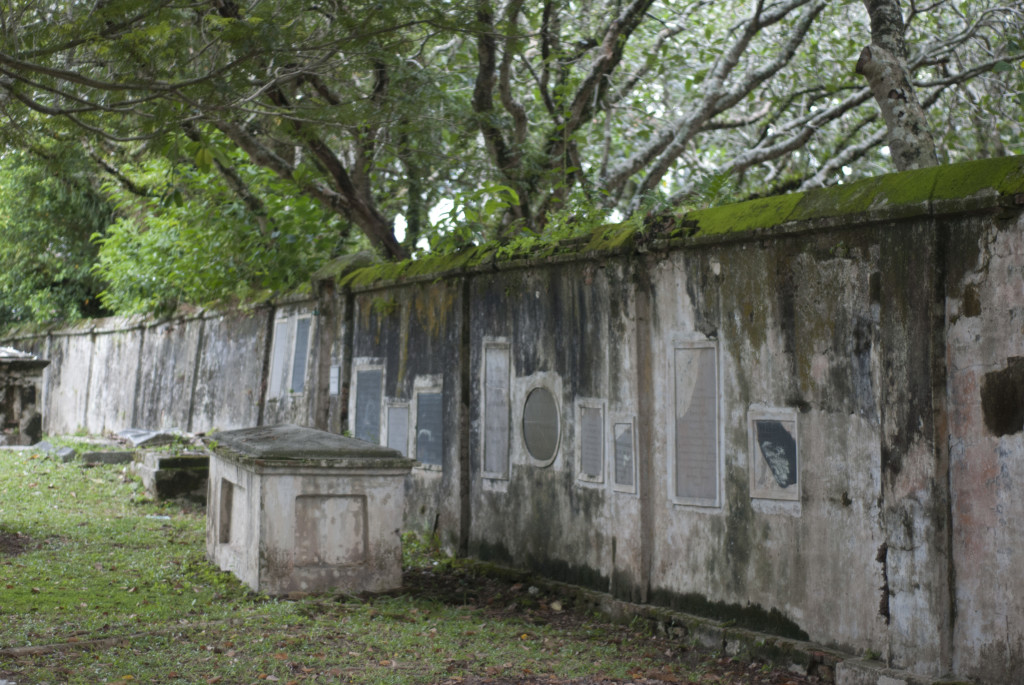
Some of the tombstones from tombs damaged by WW2 air raids were salvaged and installed along the walls of the cemetery.
Kapitan Chung Keng Quee (1821-1901) and the Tan Kim Ching (1829-1892) connection
High on the Brownie itinerary, was the hunt for the biggest tomb in Penang (and possibly in Malaysia). The immensity of the space where life sized statues guard the grand tomb of Kapitan Chung Keng Quee is a jaw-dropping experience. Kapitan Chung or Ah Quee was a leader in the Chinese community and was known for his generous contributions. He was also the headman of the Hai San secret society who led the group through the 4 Larut Wars and supported the Pangkor Treaty. The fierce fighting over the booming tin mining territories in Taiping (formerly known as Larut) involved members of the Ghee Hin and Hai San secret societies from as far as Singapore. To end the bloodshed, Prince Abdullah who himself was embroiled in a succession crisis and was sympathetic to the Ghee Hin faction, traveled to Singapore to seek help from Tan Kim Ching. As a prominent leader in the Chinese community Tan brought to bear his influence in the matter and called on the British administrators who had charged of The Straits Settlements to intercede and broker a peace agreement. The rest as they say is history. The Pangkok Treaty ended hostilities with a truce and Larut was then named Taiping – 太 (tai – ‘great’) and 平 (ping – ‘peace’). More on Romancing Taiping here.
Back in Georgetown, Penang, Kapitan Chung was also known for his expansiveness and exquisite taste in architecture and all things Chinese culture and history. His grand townhouse in Georgetown showcases some of the finest artisan work of that time imported from both China and Europe and is now opened to the public as the Penang Peranakan Mansion. Next to his townhouse is Kapitan Chung’s private temple. A life-size bronze statue of Chung stands in this temple.
Khoo Tiong Poh (1830-1892) and Tiong Bahru
Resting at a corner of the Jalan Free School roundabout is buried the man who is named for Tiong Poh road in Singapore, Tiong Bahru. Khoo Tiong Poh was a Chinese merchant and ship owner. He owned the shipping and trading company, Bun Hin & Co at Malacca Street, in Singapore, and within a few years opened branches in Penang, Hong Kong, Amoy and Swatow, making it the largest and leading shipping enterprise in the Straits. He was also known for his philanthropic deeds which included donations made to cemeteries and temples in Penang, and to the coastal defence and flood relief in China, earning him the title Dao Tai 道台 by the Qing government.
After a prolonged illness, Mr.Khoo passed away in Singapore and his body was shipped to Penang to be buried at his plantation. His son, Khoo Phee Soon, who resided in Singapore till his eventual death is buried in Bukit Brown Cemetery.
Khoo Kongsi
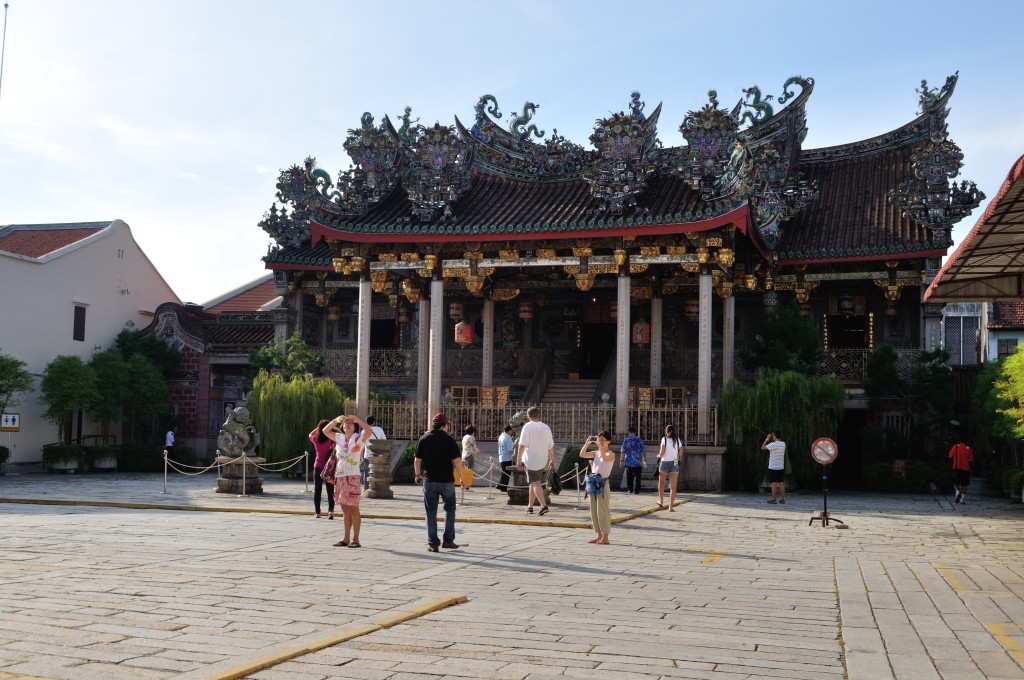
Brownies approach the grandest temple in Malaysia, Leong San Tong Khoo Kongsi clan temple (photo by Ang Yik Han)
No trip to Penang is complete without visiting the Leong San Tong Khoo Kongsi. The clan association which has opened it doors to the public as a living museum, displays the rich history behind the Khoo lineage, the grand architecture, and the elaborate Chinese decorations, paintings and carvings. It also showcases prominent pioneers who made their names in the society and contributed generously to the community in Malaya and Singapore. These men include Khoo Seok Wan, Khoo Teck Phuat and his father, Khoo Yang Tin.
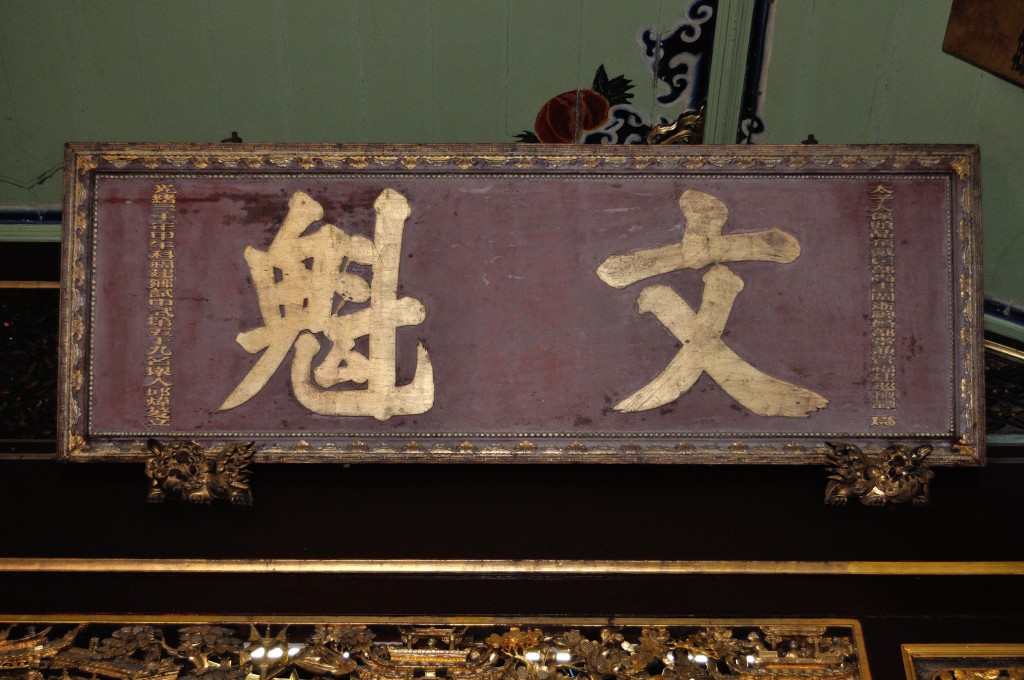
A plaque of recognition in the ancestral hall bearing Khoo Seok Wan‘s name
Over the years, the Leong San Tong has gone through a number of restorations. Over the span of 3 years (1999-2001), the biggest restoration exercise saw conservation specialists and craftsmen from China and India, flown in to work on restoring and reinstalling parts of the building with materials that were traditionally used. These included traditional organic paint, and terracotta tiles which were imported from China. The massive restoration brought Leong San Tong’s shine back to its authentic glory and garnered the National Heritage Restoration Award in 2000, and helped sealed Georgetown’s UNESCO World Heritage status in 2008.
For the few short days, the Brownies visited a few other sites in Penang which had links to Singapore but yet to explore some completely, saving them for future Brownie adventures.
=================================================
Acknowledgements :
We are grateful to members of the Penang Heritage Trust for their hospitality and guidance in our trip. Special thanks to Salma Khoo, Lim Giak Siang, Clement Liang and Joanna Khaw.
A special mention is the place the Brownies called ‘home’ for 3 nights; the Ren I Tang Heritage Inn. The shophouse once housed the oldest traditional chinese medical practice in South East Asia, Yin Oi Tong, for 124 years. It went through a 2-year restoration process which retained much of the original features, including the air-well, wooden staircase and roof tiles. Today, one can find himself soaking in Ren I Tang’s history at the comfort of his room, while sipping a cuppa at the bistro or just bybrowsing through the museum.
About the Brownies and their off-site sojourns:
The Brownies’ yearning to connect to history and thirst for adventure, brings them to various locations within and beyond Singapore. The objectives of these retreats are, to study the historical and cultural links to Singapore, and to strengthen kinship amongst the brownies.
(Brownies are the volunteers who conduct regular weekend guided walks and independent research on heritage, habitat and history of Bukit Brown Cemetery.)
It has been a long time coming, 3 years in gestation but Darren Koh – a pioneer member and solid contributor of the FB group community Singapore Heritage Bukit Brown Cemetery – has finally joined the ranks of Brownies who conduct guided walks. All Things Bukit Brown (atBB) caught up with Darren – whose day job is lecturing on taxation in a tertiary institution – and asks why now and what took him so long?
atBB : You have been following and contributing to the community online for a number of years, why have you now decided to join the ranks of brownies who conduct guided walks?
Darren I blame Chew Keng Kiat! Some time ago, we were chatting and I asked him if he recalled when the “brownies” came into being. He dated the Brownies back to one evening in Sago Lane – in fact the funeral of Raymond Goh’s father. Keng Kiat mentioned there was this group of people at a table at the end of the tentage. I reminded him I was there too – I was sitting with Mil, Su-Min and Vicky at one end. Keng Kiat mentioned that everyone at the table agreed that the Goh brothers could not possibly hunt down tombs and spread the knowledge of Bukit Brown all on their own. Plans for the 8 lane highway had just been announced and time was short. That was about when everyone at the table agreed to take on the guiding so that Raymond and Charles could focus on the tomb hunting. “Teach us. Let us do this for you.” And so – to the memory of Keng Kiat at least, the Brownies were born. Unfortunately for me, my asking when the Brownies was born also pencilled in his memory that I had not guided any walks. Since my conversation with him about that evening, he has often taken the opportunity to ask when I would actually guide. Even as recently as this year’s Chinese New Year dinner, Keng Kiat nudged me again and said “Look around you – everyone at that table so many years ago has gone on to guide. You are the only one who hasn’t. When are you going to do so?”
Truth of the matter was that it was always going to be a matter of time. I was in the midst of getting a new programme running at the university, and that was just soaking up my time. I did not have many people helping me teach then, and I was teaching many of the courses myself. And the courses took place at the weekends. So I really could not go out to the hills as often as everyone did. As you point out, I have been keeping in touch with the Brownies and following the discoveries, the developments, the joys and the lows. But always once removed. I must say, the Brownies were kind enough to include me in many of the offsite events (read – dinner!, etc) and it was at one event when one of our guests asked if I was a Brownie that I sort of blurted out “Not really – I have helped out in some walks but have not guided one myself. I do not think I can wear the title until I have done that.” And that I think was when Catherine jumped in an said, “He’s an Associate Brownie!” So yay! I had a place!
Now that the programme at the university is more settled, I can breathe again, and I was looking to get out of the air-conditioned world, and maybe get more exercise, and do something I like…. I realised why not just guide walks. It ticks all the right boxes – it’s in the midst of nature, it’s out of the artificial world of the office, I will walk a lot, and I will get to do what I like – tell stories. A perfect fit. And so, after a couple of weekends of doing my homework (i.e. walking the hills, trying to find the tombs, getting lost amongst the stones), I started guiding.
atBB Share what has been your experience like so far after 3 guided walks.
Darren It’s been great! Each one has been different: the routing, the tombs we visited and therefore the story that was told was different. And in the last walk, I even had to abort a visit to two tombs and think of rapid replacements as the tombs I had wanted to visit were inaccessible.
It is usually good to have people ask questions – although sometimes that is scary as you never know which angle they will come from. But the good thing about being a volunteer guide is that I can say “I don’t know – will have to get back to you on that.” A bit more difficult to say that in my normal classes!
The one thing I am reminded of, is a piece of advice shared with me by a good friend Tony Oldham, whom I got know well while we were travelling on the Trans-Siberian Railway. He was an archaeologist and anthropologist, and was also a tour guide in Europe. He said, “Never let a few facts stand in the way of a good story.” Something which I have since learnt is very true: the people who come for the walks are not here for a history lesson, or a degree in decorative arts. The finer details therefore do not exactly matter. What matters however, is the story of the person we are calling upon: we bring that person to life when we relate their life and times. Even more so if we can weave a line from the person we are calling upon, to the visitors today. You can see for instance, the change in people when I reveal that we know so much about how Soh Koon Eng died because the daughter of the boy Koon Eng shielded with her body told us the story. Or when they realise the man in the small grave I am talking about was none other than Lee Kuan Yew’s grandfather … All links from the past to the present that they know.
The one regret to date? I wish I had more time to share more with the visitors, but we have 3 hours before we tire. There is only so much we can share in each session. The only problem is when there are certain expectations – just as Frances Yip will never be allowed to have a concert where she does not sing the theme song from the Bund/Shanghai Beach, there are certain tombs that visitors ask for. Then you are stuck in who else to call upon with the time you have left in the walk after up have visited those “top tombs to visit”. I think I will have to be a bit more creative in routing my walks, or just learn to say “Not this time.”
atBB What would you say is your main interest in Bukit Brown?
Darren It’s the transmission of culture and the understanding of history! There is much to be told from the stones: they tell of the person. From the research we get the story to enable us to link the person from the past to what it means today. That is the job of the storyteller – that’s why I love it when people get the stories! Personally – I’m not the greatest fan of bush bashing – the effort undertaken to find the tombs of people. I think my mechanical-pencil hands were not meant for hacking through forests with machettes. But give me the facts, and let me tell the story – that is my forte. Right now, we need to tell as many as possible the wealth of history and culture that lies in Bukit Brown.
atBB notes: bush bashing does not involve machettes as such, more walking sticks and some Brownies carry a small cutter to help them clear vines.
atBB Tell us a little something about yourself.
I have been telling stories since I was young – I even won a school prize and represented the school in a story telling competition when I was in primary school! I think the best way to tell an idea is to put it in a story that the listener gets. The question is how the listener gets it: and I have to tailor the story to the listener.
Darren In many ways, all my past I have been a story-teller: as a lawyer and a chartered accountant who specialises in taxation, I have learnt to use the skill to help in negotiations, in drafting documents, in preparing defence files and in tax audits. Since I switched to academia – it is all about telling stories again, although this time I tell them to students, in the hope they will learn to tell their own stories themselves.
Having dissected a snake in school, I am not that worried about them. But I do fear cockroaches – don’t ask me why – so thank goodness they are not one of the worries i have out in Bukit Brown.
I used to be able to say that I have worked in all the northern continents except where the polar bears roam – but the bears are now roaming further down south into North America so I will probably have to revise that statement now.
atbb observes : As you can tell from his interview, Darren is quite a wit and most diligent, the bonus is he comes with a wealth of knowledge about Chinese culture and temples and is also one of the pioneer membersof the yahoo heritage news group. His next guiding session is at the first regular first weekend guided walks, atBB is launching, starting in June on the morning of Saturday 6 June, 2015, so please register here if you want to “experience” him in person.
For more photos of Darren, the brownie in action please click here and note that you need to have a facebook account to view these photos.
Remembering Yeo Bian Chuan
by Simone Lee
Qingming or Tomb-Sweeping Day is a traditional festival on the Chinese calendar in remembrance and respect of ancestors. Families visit their ancestors’ ‘home’ – the grave, for a ‘spring clean’ and replenish their needs by leaving ‘worldly’ offerings. This year, the festival fell on the 5th of April and 10 days before and 10 days after is the period where rituals are conducted.
Bukit Brown is busiest at this time of the year. Jams are not uncommon. Throngs of people drive around the historic cemetery to look for their ancestors’ tomb. They carry with them bags of offerings and cleaning tools. Yet, for another year, Yeo Bian Chuan’s grave laid forgotten.
In February 1915, during the Indian Mutiny in Singapore, Yeo Bian Chuan saved 17 Europeans’ lives by hiding them in their home from a bloody massacre. For this he was awarded a commemorative gold medal but died before receiving it.
Today, Yeo Bian Chuan’s tomb is in a state of neglect, not what a hero deserves. We can only hope that soon a descendant would identify him and restore the glory of his ‘home’, one which he deserves.
Read more on Yeo Bian Chuan’s story at Peter Pak’s blog here.
Welcome to a new year, as we cross the threshold into 2015, we look back on the year that has passed.
A is for Advocacy
On 30 August 2014, “The Bukit Brown, Brownies” became the first recipient of the Civil Society Advocate Organisation of the Year Award in the inaugural Singapore Advocacy Awards.

The Brownies with Constance Singam, one of the judges and a highly esteemed civil activist and writer
It was an honour that we could not have dreamed off when we started our journey in January 2012 to raise awareness about the heritage,habitat and history of a 90 year old cemetery, that many say had been “abandoned” and “forgotten”.
Well, here’s the news, they were wrong. And this is why: over 13,000 participants to the guided walks – comprising a demographic from all walks of life, from all ages, from students to community constituency groups, photography enthusiasts, international academics, meet-up groups, and media crews, travel writers, civil servants, docents etc etc; 4 exhibitions over 2 years, the first ever listing for Singapore as a heritage site under threat, under the World Monuments Fund Watchlist 2014, and this year alone, 3 major academic publications. It is a record which speaks for itself, carried by a momentum, best described as organic in nature, and a ground up initiative. When it comes to development in Singapore and how it impacts our history and heritage our sense of identity and place , Bukit Brown as a cause, as a movement, as a place in the memory scape of Singaporeans, refuses to die.
B is for Bukit Brown
2014 was a year Bukit Brown went off-site and “broke new ground” in 2 major exhibitions and inaugural guided walks in the City.
In March, Woon Tien Wei and Jennifer Teo, the husband-and-wife artist-activist team behind Post-Museum curated “The Bukit Brown Index” which was one out of 28 local works featured in an exhibition called “Unearthed” The highlight of their work was a wall on which the names of the exhumed and unclaimed which had to make way for the highway through Bukit Brown, were hand written with the help of Brownies, among others in the heritage and artistic community.
In July, Bukit Brown : Documenting New Horizons of Knowledge was officially opened by MOS (MND) Desmond Lee at the National Library. It represents almost one and half years of research and working the ground documenting some 4,153 tombstones which are affected by the building of a new highway across Bukit Brown, by a team under the leadership of Dr. Hui Yew-Foong, an anthropologist with ISEAS. The exhibition is currently on tour at regional libraries until next year.
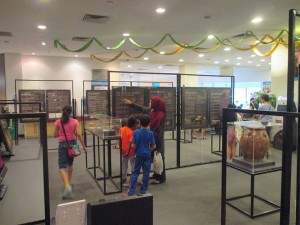
The Exhibition at Choa Chu Kang Library (photo Mok Ly Yng) The next and final venue will be at Toa Payoh Public Library. It will open from 4 January 2015 (Sun) till 31 January 2015 (Sat).
In conjunction with the exhibition, All Things Bukit Brown curated 2 special guided walks The Descendants Stories which featured descendants of pioneers sharing their stories of uncovering their roots in Bukit Brown.
Our march into the city was sealed when we partnered the Singapore Heritage Society and co-curated the Bukit Brown in the City and the City in Bukit Brown Walk walks for the Singapore Heritage Festival 2014 in July.
In May, we partnered Jane’s Walks and curated a walk which took participants from the Botanic Gardens to Bukit Brown , bridging the colonial and immigrant narratives of our history.
And in a nod to the Bukit Brown Jane’s Walk, 2 participants Louise and Bridget organised of their own initiative and without any assistance from the brownies, a guided walk for a group of ten of their friends in September. We thank them and hope they will do more!
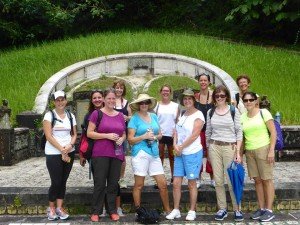
Louise’s and Bridget’s Guided Walk for friends in September inspired by their participating in the Jane’s Walk (photo Louise Ragget)
In September also All Things Bukit Brown, was invited to make a 10 minute presentation in the “Singapore Dreaming” workshop by the Asian Urban Lab as a lead up to a the major conference in 2015 where leading artists, academics, professionals and other thinkers across diverse disciplines will share and explore alternative visions of a Singapore that is sustainable, creative and vibrant.
In 2014, Bukit Brown continued to be featured in student media projects, international news analysis on Singapore’s issues of development and heritage, local TV programmes from “My Grandfathers’ Road” to “Secret Singapore” and its sheer beauty and remembrance of Singapore as as a major battleground in WW 2 was visually showcased in an award winning art house film called “The Canopy” screened at this year’s Singapore International Festival in November.
Next year, watch out as one of the Brownies will guest host a new programme on Channel 5 to introduce Bukit Brown.
After a hiatus and the completion of The Adam Park Project TAPP , the ever popular Battlefield Tours conducted by Jon Cooper returned – once a month every first Sunday – and continue to be over subscribed.
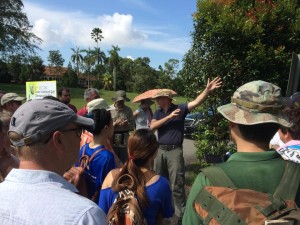
Last Battlefield Tour of 2014 by the lively and knowledgeable war archeologists Jon Cooper (photo Bianca Polak)
In 2014, we conducted more guided walks by private request. Of all the requests for guided walks, the most enthusiastic and frequent requests came from our educational institutions from secondary to tertiary institutions both local and international for “Learning Journeys”
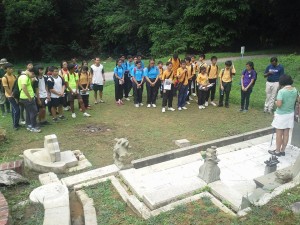
Dunman Secondary School students observing a minutes silence at the grave of Tan Ean Kiam (photo Yik Han)
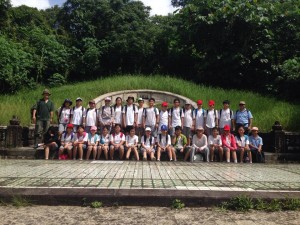
JNV-Students-at-Ong-Sam-Leong-photo-All-Things-Bukit-Brown
We shifted gears from guided walks and organised on request by Standard Chartered Bank, a Corporate Social Responsibility event which was so successful, the bank has already completed 3 sessions at Bukit Brown of clearing and cleaning selected tombs between May and November 2014. They will make a comeback in 2015.
On site, discoveries continued to be made. This year alone, the two great finds were the founder of Hong San See temple Neo Jin Quee and the family cluster tombs of Lee Kuan Yew maternal ancestors.

Zaobao report on finding Neo Jin Quee, founder of Hong San See Temple, May 5, 2014
On site, as we have done, for every year since 2012, we celebrated NDP ’14 , Our Bukit Brown, Our People with both gusto and with sadness in an landscape which has changed and will continue to change as the road works encroach slowly but surely .
On site, sometime in November, while we were not looking, the ole raintree was chopped down and overnight it was gone, our consolation comes from our shared memories.
C is for Community
It has been the heart of community and your passionate support which has sustained, encouraged and uplifted the Brownies over the past 3 years. A community which includes academics, journalists, artists, writers, descendants, tomb keepers and fellow activists in heritage and the environment. We single out for our gratitude the Singapore Heritage Society and the Facebook Group Community Heritage Singapore- Bukit Brown Cemetery.
When a call was made for feedback to be given on the URA Draft Masterplan 2013 in December of the same year, we received some 30 responses which were sent to the Ministry of National Development. You wrote on how important it was to preserve Bukit Brown for future generations, for the environment, as a space important to root Singaporeans to the land and for the sharing of collective memories.
In June 2014 the Masterplan was gazetted with no changes to plans for Bukit Brown. But if you thought, your efforts were for naught, let us reassure you, it was noted and it did make a difference in paving the way for better engagement on the future of Bukit Brown. We have only just began.
In 2014, three major academic papers on Bukit Brown were published
We thank : (Drs) Natalie Pang and Liew Kai Khuin “Archiving the Wild Archivists”, Dr Terence Chong (Singapore Heritage Society) “Bukit Brown municipal cemetery: Contesting Imaginations of the Good life in Singapore” and Prof Huang Juanli ” Resurgent Spirits of Civil Society Activism: Rediscovering the Bukit Brown Cemetery in Singapore” for their comprehensive and thoughtful and thought provoking papers.
To the descendants who have trusted us with their stories, we salute you.
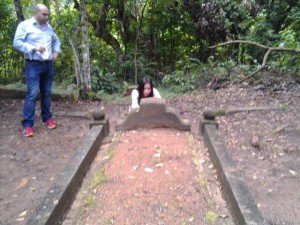
Gillian Lim-Mendy with her husband flew from London to pay their respects to their Grandfather Lim Hock Seng for the first time in December. Her story can be found here (photo Catherine Lim )
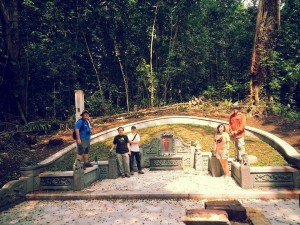
Brownies visit the grave of Yap Geok Song, newly renovated after descendants contacted Peter Pak to show them their ancestor’s tomb after reading his blog
And a special mention and shout out to Zaobao journalist Chia Yei Yei and the heritage reporters of Zaobao for the breathe and depth of coverage they have given to all things related to Bukit Brown from pioneers to Brownies in 2014.
The Chinese daily capped off the year in recognition of the part the Goh Brothers have played in uncovering our historical and heritage gems by headlining them among the paper’s Personalities of 2014.
We ended 2014 on site, in the last guided walk of Bukit Brown for the year with some 50 people turning up.
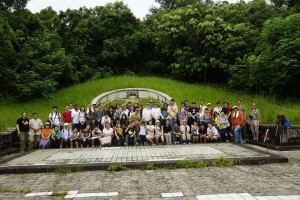
Collections, Recollections and Our Favourite Moments, last guided walk for 2014 on Sat, 27 Dec (photo Yeo Hong Eng)
50 is of course a significant number as we cross the threshold into 2015. 2015 is SG50, a year of national celebration of 50 years of our history and achievements. But what can we look forward to in a landscape which will continue to be pockmarked and drastically changed by construction work on the development of a highway?
We will keep calm and carry on, engage constructively, walk the ground, walk the talk, continue to be excited by new discoveries and we will – and this is a clue – write a new chapter on our past and take it into the present. In short, we will continue to honour our heritage, habitat and history, and remember those who laid down their lives in memoriam for without them, SG50 would not be possible.
“Lest we Forget”
We remember Victoria Tan and Edmon Neoh-Khoo
RIP
Compiled by Catherine Lim
by Catherine Lim
Canopy by Arron Wilson is a World War Two film shot mainly in Sungei Buloh and Bukit Brown, with flashback scenes that takes viewers to the Australian outback farm from where Jim, the Australian fighter pilot – one of only 2 lead characters – is from. It has a script which consists of a few phrases of incoherent Hokkien spoken by Seng, the Chinese resistance fighter – incoherent perhaps because my rudimentary Hokkien could not grasp it – a smattering of Japanese dialogue among patrolling Japanese solders for which they were no subtitles, and Jim himself as I recall spoke nothing more than his own name through out.
But it did not matter, because the cinematography draws us into the depths of the landscape of war set in lush, verdant green as if we were there, and the sound scape of gunfire, bombs, distorted bird and insects calls, , the menacing rustling of undergrowth and the silence of the jungle tells the story of a bond that is formed over just one night.
Canopy unravels the story of of 2 lone young fighters, from two vastly different cultures – where even the sound of their names Jim and Seng are so alien to each other’s tongues – running into each other, caught in the bewildering jungle of war and what happens reaches spirituality.
There is an eye averting sequence when Jim tends to the wounds of Seng, and is forced to gag his screams as the Japanese soldiers patrol pass. The mirror scene is when Jim relives his nightmare of falling into the canopy of trees and he wakes up with Seng’s hand over his mouth. Seng is watching Jim even as he sleeps, the same way Jim had watched over Seng.
They are drawn together by a common enemy but more than that, faced with fear, pain and ever present danger, they find in each other more than just comfort and respite.
Something quite extraordinary is experienced between Jim and Seng which passes in the moments of silence and solitude in the jungle. They bond in a way that plunges into their stream of consciousness even as the camera plunges the depths of the jungle. It is as if they had a shared past in the flashback of the farm Jim lives in and in the black the white photograph of Seng’s parents. It is intimate, it is visceral.
War destroys lives but war is also the great leveler , breaks down the divide of colour, culture, race and religion, and forges a connection that unites humanity and uplifts the spirit in endurance and compassion.
The story of Jim and Seng is not an unlikely story, it is a story that could have happened in the 3 years of Japanese Occupation in Singapore between 1942 and 45, it is a story that surely must have happened with the same intensity, in some corner of war- torn Singapore. It is a story among many others, waiting to be uncovered.
The time has come to reclaim our past.
“Lest we forget”
************************************
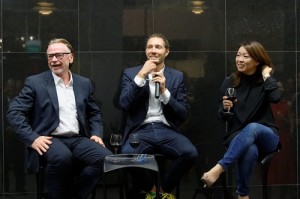
Ambassador Philip Green. Aaron Wilson and Pek Lian in animated discussion with audience. (photo courtesy of Australia High Commission)
Catherine was invited under All Things Bukit Brown to a private screening of the film as a guest of the Australian High Commission A short discussion followed with producer Aaron Wilson and local film maker Pek Lian who produced Synonara Changi which covered the theme of war remembrance.
Next year, All Things Bukit Brown will commemorate the 70th Anniversary of the Liberation of Singapore from Japanese Occupation.
Dunman Secondary School brought around 40 students to Bukit Brown on 16 August 2014 for a learning journey. Our students marveled at the vast, rich sloping terrain covering over 200 hectres of land space. Some graves dot all the way to Mount Pleasant Road (along PIE).
Our students know that Joo Chiat and Boon Lay are familiar residential estates but little did they know them to be named after our pioneers who lie buried at BB. Tan Ean Kiam, the pioneer whose foundation donated to the construction of our school hall, lies buried at BB alongside his wife. Our students observed a minute of silence as a mark of respect for him.

Dunman Secondary School students observing a minutes silence at the grave of Tan Ean Kiam (photo Yik Han)
Our students learned about the strong cultural links our pioneers had with China expressed in the Chinese poetry and the rich artistry in the sculptures and carvings on their grave stones.
The ultimate aim of education is known to be character-building, but certain values such as filial piety and fortune expressed in an abundance of descendants and sustaining blood lines, are so deep-seated that our pioneers bring them down to their graves in forms of figurines symbolizing these values. One grave had carvings showing a a daughter in law breastfeeding her aged and toothless- mother-in-law, choosing to feed her over her crying child, in an act of filial piety. Another grave had 2 Sikh guards standing erect and tall each by the side of a rich tycoon’s final abode. He even had them enshrined as a “sepoy” (stationary guard) and a “prowler” (one who patrols around). This setting reveals the trust placed on the Sikhs for protection during colonial times. Our students were amazed by the detail and rich history of Bukit Brown.
Our students learned that war time graves were smaller and have a unique serial numbering. They were also informed that mass graves were a norm during the Japanese occupation from 1942 to 1945.
We offer our deep heart-felt thanks to the brownies ( the Bukit Brown volunteers) Yik Han, Beng Tang and Catherine for an informative and educational tour of BB. Their passion and love for the history and heritage of the pioneers is evident during their explanations and guidance of the tour. We truly believe that Dunmanites in the tour benefited greatly from the sharing and discussions.
By Gopie Silvarajoo Naidu Prem ( Teacher in Charge)
Editors Note:
The students were from the schools NPCC. Their teachers had worksheets which they worked on immediately on-site after the guided walk. The learning journey was documented and later published in their newsletter. We thank the teachers especially of Dunman for going the extra mile to do this despite their very busy schedule. We note that this was the third time the school has requested engagement on Bukit Brown with Brownies for various groups of students. There was one previous visit to Bukit Brown and a brownie had also made a presentation on Bukit Brown at the school itself.
Thank you for sending atBB the PDF of the newsletter.
Schools who are interested in learning journeys, please email a.t.bukitbrown@gmail.com. and give us least 3 weeks notice.
Catherine Lim
1
by Sally T.
One recent Saturday, some friends and I had the pleasure of being guided around Bukit Brown Cemetery on a special tour led by three descendants of notable people buried there. The Descendants Tour was presented in partnership with the National Library of Singapore – a great community initiative on the part of the library. A few seasoned guides helped lead the group, which really helped to add insight and context along the way.
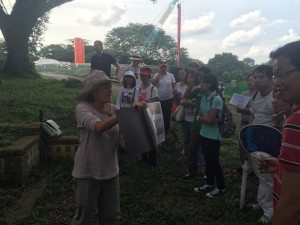
Claire, a Bukit Brown volunteer guide gave a brief introduction on the history of Bukit Brown Cemetery and Singapore’s pioneers (photo by Simone)
Each of the three descendants had fascinating stories to share and we were treated to what I would describe as a once-in-a-lifetime experience. Hearing them so passionately and proudly tell familial histories and sing songs in honour of their ancestors, many of whom were pioneers of early modern Singapore, will be something I look back on as a highlight of my time living here. We visited the resting places of enterprising business people, diplomats and philanthropists – the type who have streets named in their honour.
In recent years I had heard a lot about Bukit Brown, a national treasure that had been rediscovered by a caring community and was being hard fought for. Despite my curiosity I’d never visited, perhaps not wanting to feel inappropriate or as an invasive foreigner, but a conversation with a friend who is a passionate historian prompted me to look up the next tour available. The fact that three descendants were taking the tour alongside a few experienced Brownies seemed like a unique opportunity and one not to be missed. I was right.
Our meeting point was just near the LTA temporary set-up, which we figured was the site headquarters for the current exhumation works taking place in certain sections of Bukit Brown. There’s no denying that it’s a confronting reality. While I’ve known for a while that exhumation is fairly common here, I learned that it has a relatively long history in Singapore and happened under British rule too, as one of the graves we visited had actually been moved there from somewhere else in the 1930s or 40s. The current works were well underway when we visited, with high fences erected throughout. From the main road, you would easily have mistaken it for any construction site.
Once the large group of about 30 was assembled, we walked a short distance to the tomb of Chia Hood Theam, who was a respected businessman with a lovely black and white home called Rosedale at the corner of Devonshire and Killiney Roads. Chia’s maternal great-great granddaughter Noreen Chan, along with some other family members present, shared a series of beautifully preserved photographs and stories that had been passed down through the generations. Noreen described how as well as being a ‘comprador’ – the business relationship managers of the old banking regime – her Peranakan grandfather was an early champion of women’s education in Singapore. The tomb was well preserved and had beautiful tiling work.
Next stop was the tomb of one of Dr Lim Su Min’s several ancestors buried at Bukit Brown. On this mother’s side, Dr Lim’s lineage can be traced back to Tan Tock Seng, a prominent merchant and philanthropist who of course the hospital is named after. We visited the tomb of a relation of Tan Tock Seng. An impressive tomb turned a rusty orange from the lichen, the resting place was a little way up a small hill. After sharing his fascinating family history, Dr Lim treated us to an intimate and special moment as he sang a song he had written in his ancestors’ honour. Standing there with only jungle noises to compete with the ukulele, we knew we were witnessing something heartfelt.
The third tomb we visited was tucked much further into the jungle, and on the way we passed some extraordinary tombs, all with different style and character. Clearly, grieving family members had gone to a great deal of trouble to put their loved ones to rest in a place of beauty. The third descendant to share with the group, Serene Tan, went on a mission to find her family’s cluster of tombs after being visited by a man in Mandarin robes in her dreams who encouraged her to visit. After a long search and some coincidences that could only have been fate, one of the Brownies came across the tomb of Serene Tan’s ancestors, including Tan Quee Lan, which were in somewhat of a rundown state. Together with family members, the Tans have done an magnificent job of restoring the tombs with an impressive marble structure.
Dr Lim Su Min once again led us to the last tomb of the tour, which belongs to the eldest son of Tan Tock Seng called Tan Kim Ching, who was successful in further expanding the family’s business empire with rice mills and tin-mining in Siam. The size and stature of the tomb was very impressive and Tan Kim Ching was clearly an important man. After gaining the trust and respect of the King of Siam, Tan Kim Ching was appointed a Singapore-based diplomatic representative of the court of Siam. We learned that he also represented Japan and Russia in diplomatic relations in Singapore. One of the most intriguing things I learned was that Tan Kim Ching was responsible for the posting of British governess Ann Leonowens to Siam to famously teach the children of the King.
I found Bukit Brown majestic in both the grandeur of the tombs and the beauty of nature which has enclosed or almost seemingly protected the site in its forgotten years. When one of my friends who came along mentioned that he was visiting Bukit Brown to some Singaporean business associates, he was met with wide eyes and trepidation! While I wouldn’t want to go there at night, it wasn’t as eerie as I suspected so I would strongly encourage those with an interest in Singapore’s history and culture, and strong sense of family values, to visit this special place. My friends and I will pass the word on about the tour to our friends – foreigners and locals alike – in the hope that more people will come and experience Bukit Brown. Who knows whether they will find an ancestor of their own.
______________________________________________________________________
The Descendants’ Stories – A Guided Walk at Bukit Brown (English)
Saturday, 8 November 2014, 4 pm – 6.30pm.
All Things Bukit Brown* is pleased to curate a guided walk in conjunction with the roving exhibition “Bukit Brown: Documenting New Horizons of Knowledge”
Registration is required and all queries is through the NLB website here , spaces are limited to 28.
About the Walk:
News that a highway was to be built across Bukit Brown in 2011 led some descendants who had lost touch with their ancestral tombs to embark on a quest to find them. Some of those who were successful shared their stories of reconnecting with their ancestors and family oral history with the volunteers on the ground, called Brownies.
For this special walk, 3 descendants of prominent figures in business, philanthropy and diplomacy in the 19th and 20th centuries will be sharing their stories first-hand at the tombs of their ancestors.
- Dr. Lim Su Min’s maternal lineage can be traced back to Tan Tock Seng, whose eldest son Tan Kim Ching grew the family’s fortunes, expanding into Siam with rice mills and tin-mining. He became a confidante of the King of Siam, and was appointed a diplomatic representative of the court of Siam. (He held similar positions representing Japan and Russia.) Among the stories Dr. Lim will share at Tan Kim Ching’s tomb is his introduction of a young English widow, Anna Leonowens to the Siamese King, a story which became immortalized in an Oscar winning musical.
- For Serene Tan, the journey of discovering her family’s cluster of tombs at Bukit Brown started the night a man in traditional Mandarin robes came into her dream and passed her a note that simply said “Why no one visit?”. Serene will share how she was finally able to find the tombs of Tan Quee Lan of whom she is a direct descendant on her paternal side after a few years and in the process connected with a long lost cousin. Both then went on to restore and refurbish the family cluster of tombs at Bukit Brown, which had for so long been forgotten.
- Noreen Chan comes from a long line of influential and wealthy “compradors” – the business relationship managers of the old banking regime. At the tomb of Chia Hood Theam, Noreen will recount stories of her maternal great-great grandfather’s frugality and contributions to women’s education from family oral traditions and historical records
**********************************************************************
Please read if you are attending our guided walks for the first time, useful info on safety : Getting There/游览信息
*All Things Bukit Brown is the banner for a community of volunteers called “Brownies” who conduct regular weekend guided walks and do independent research on the heritage, habitat and history of Bukit Brown. They have guided over 13,000 people since they started their guided walks at the beginning of 2012.
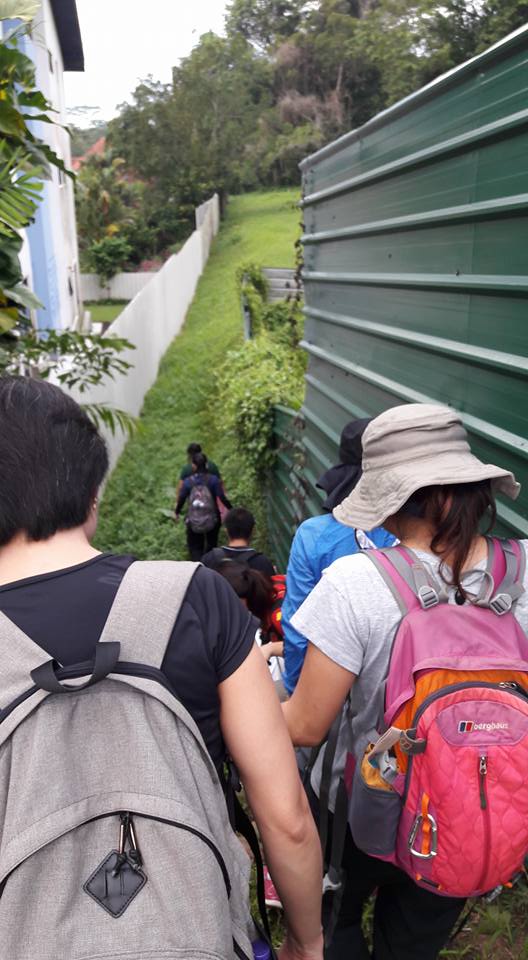
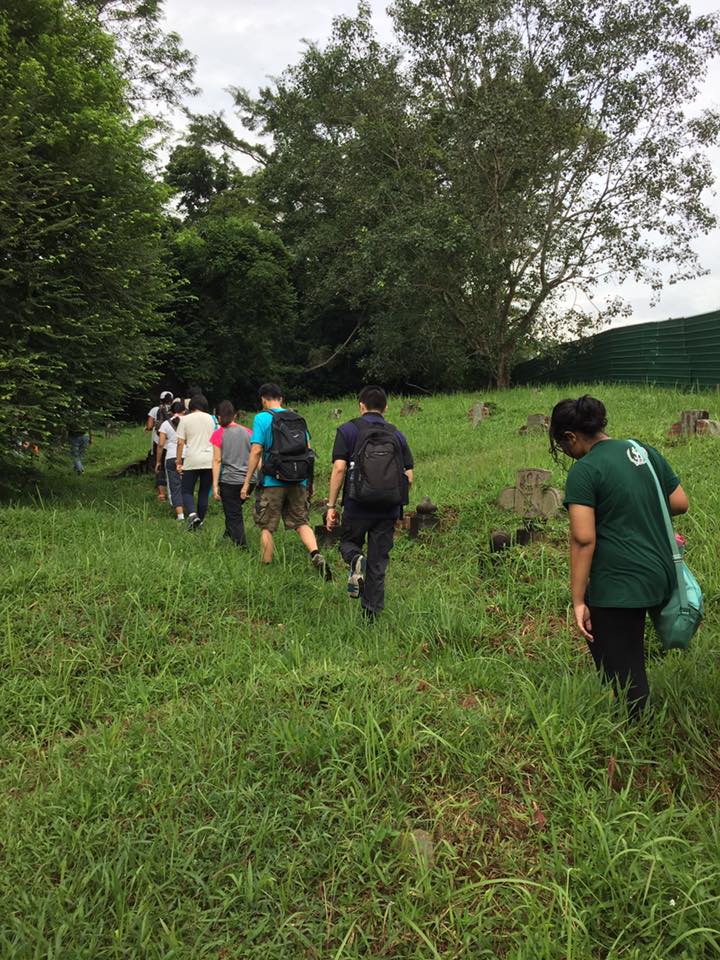
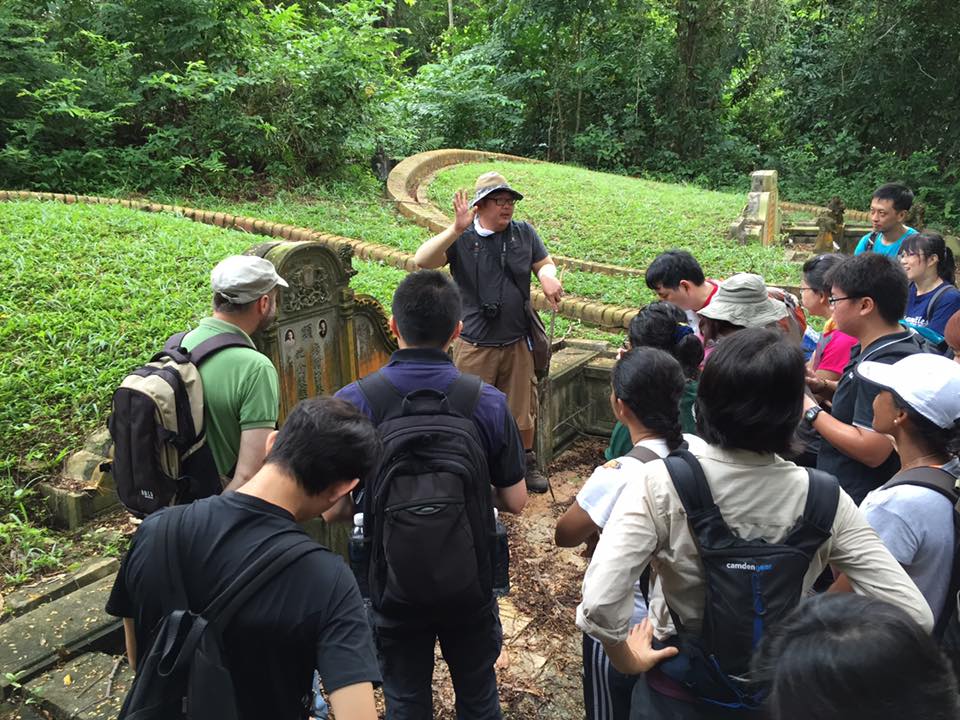
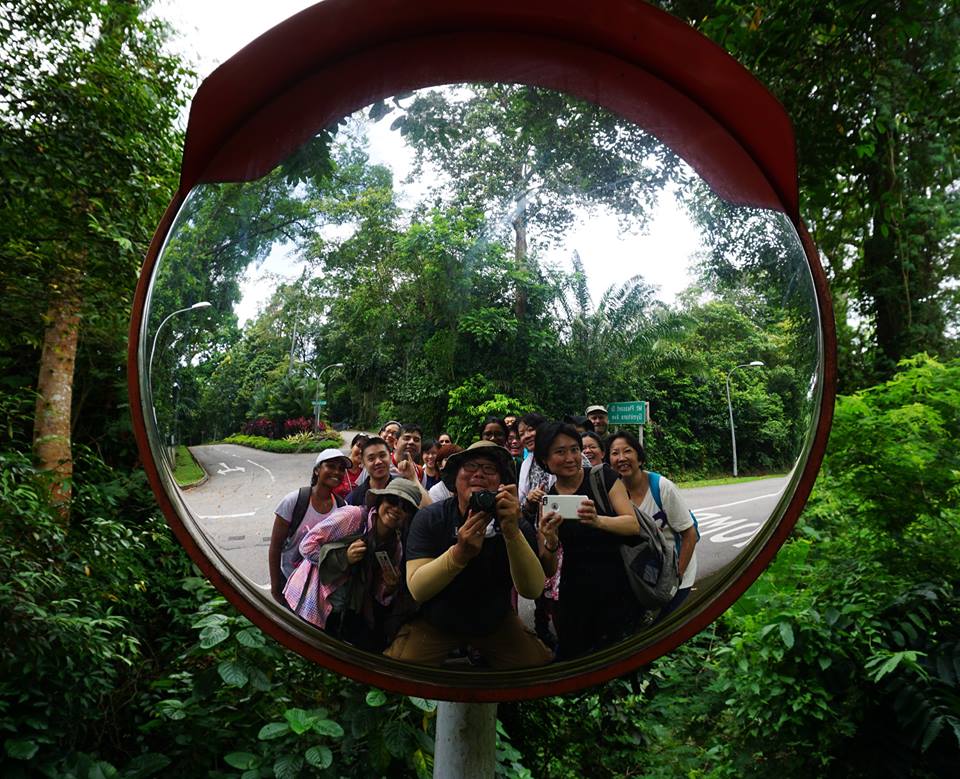


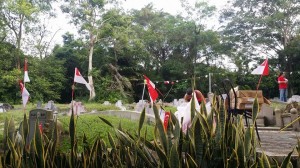
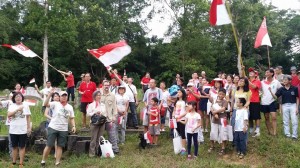
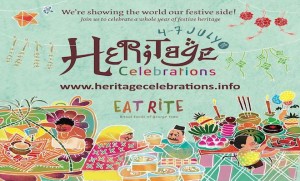
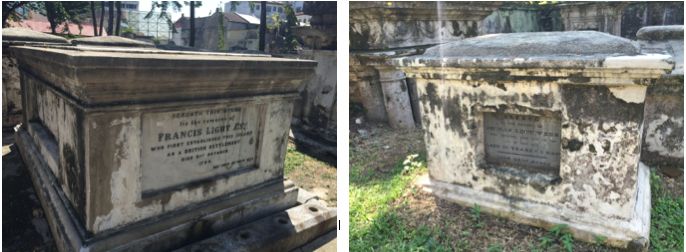
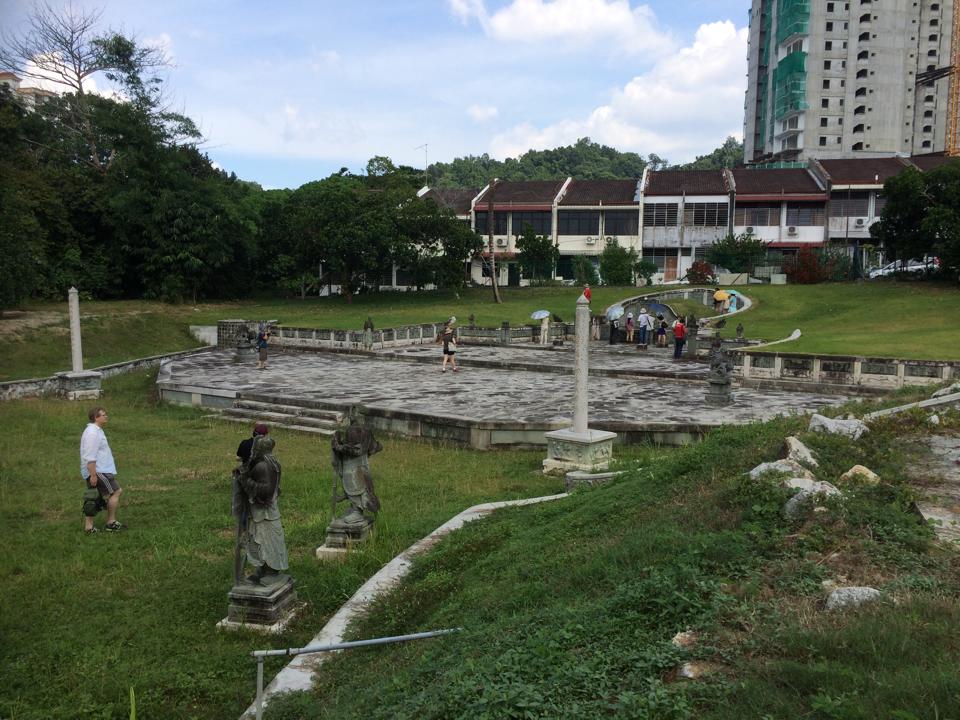
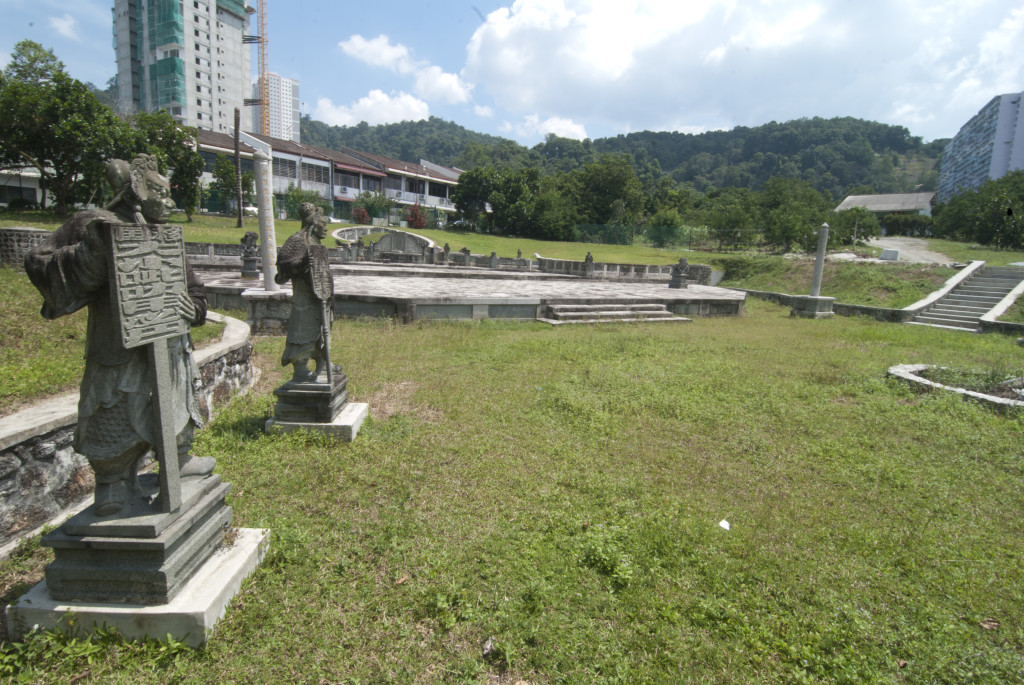
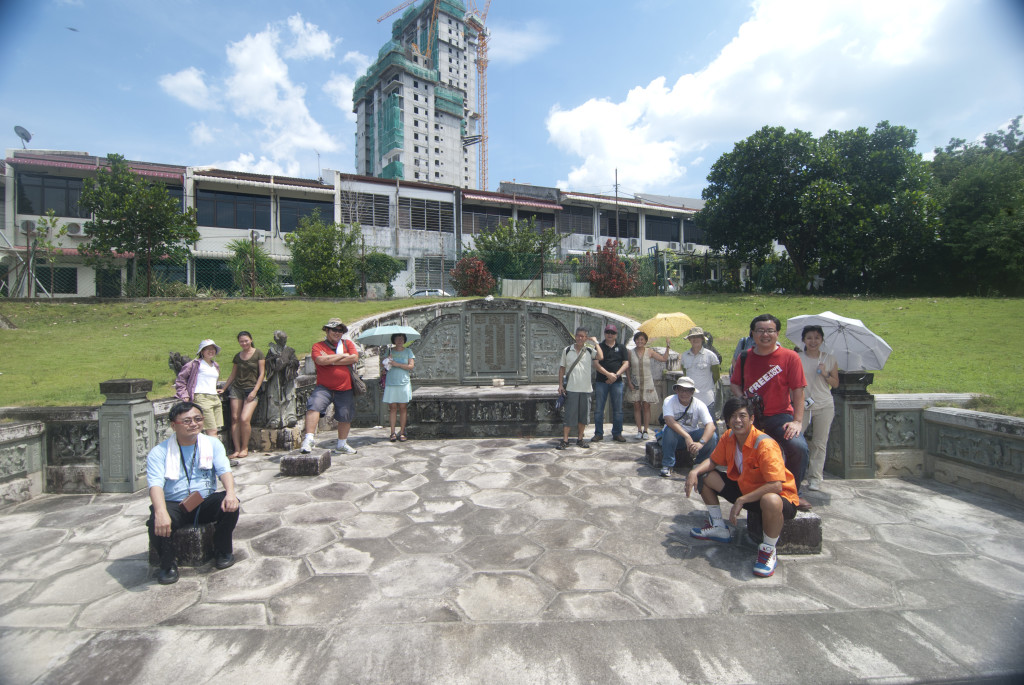
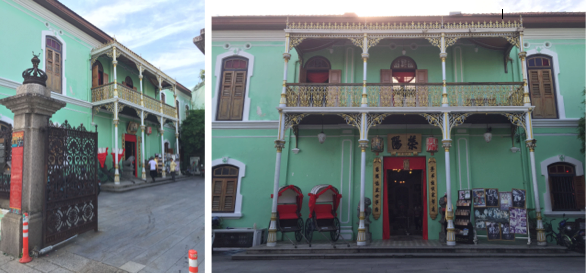
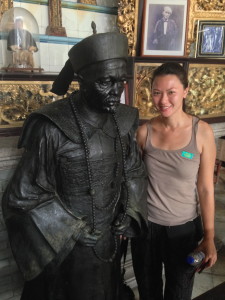
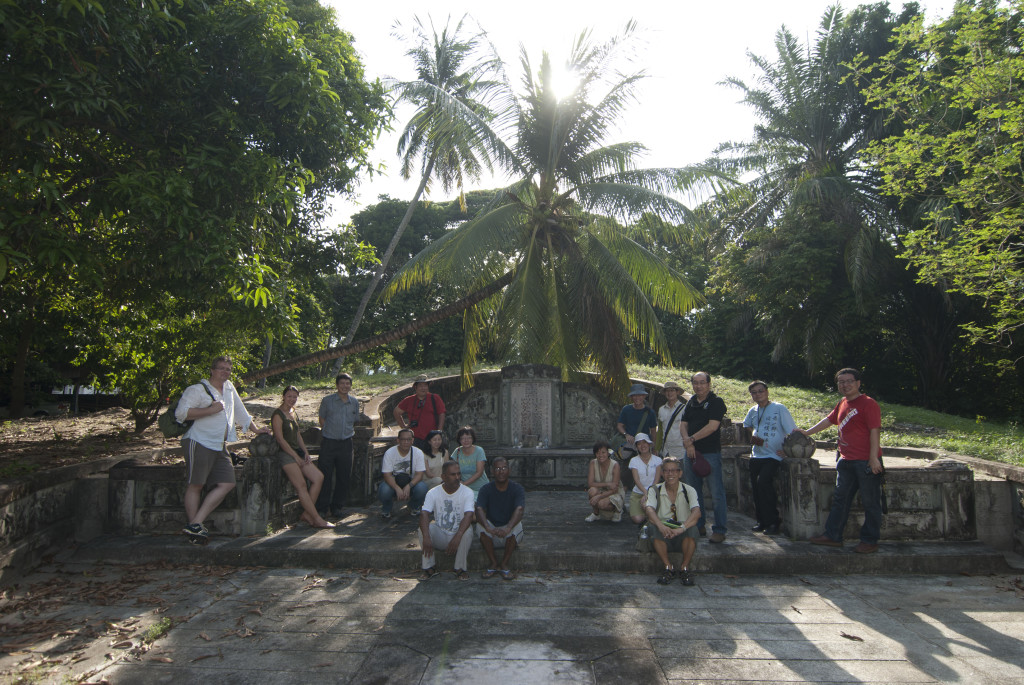
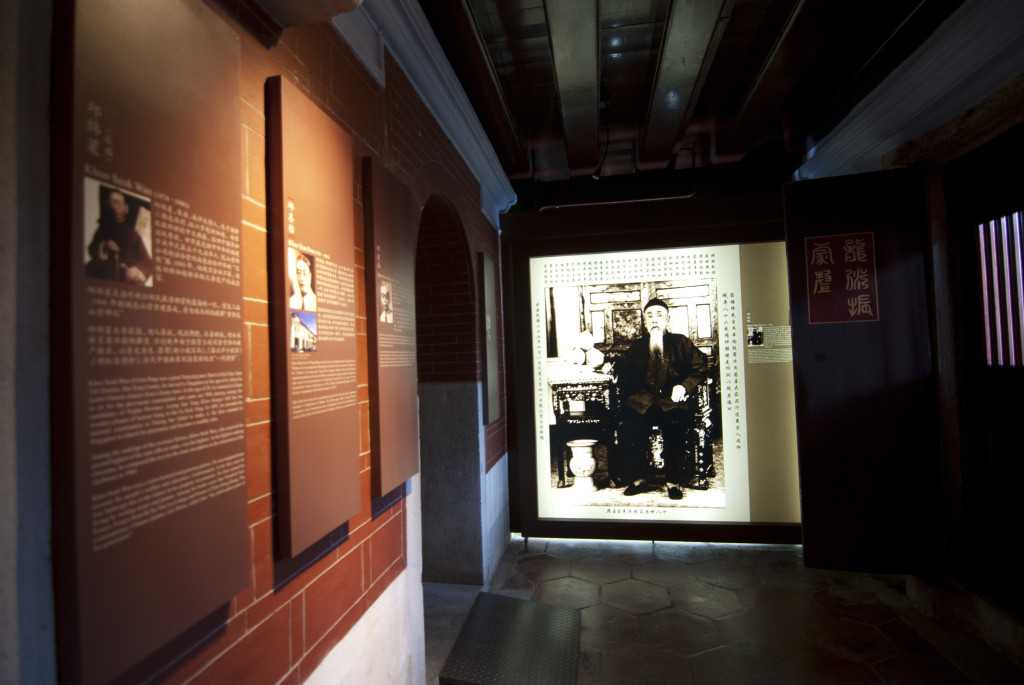
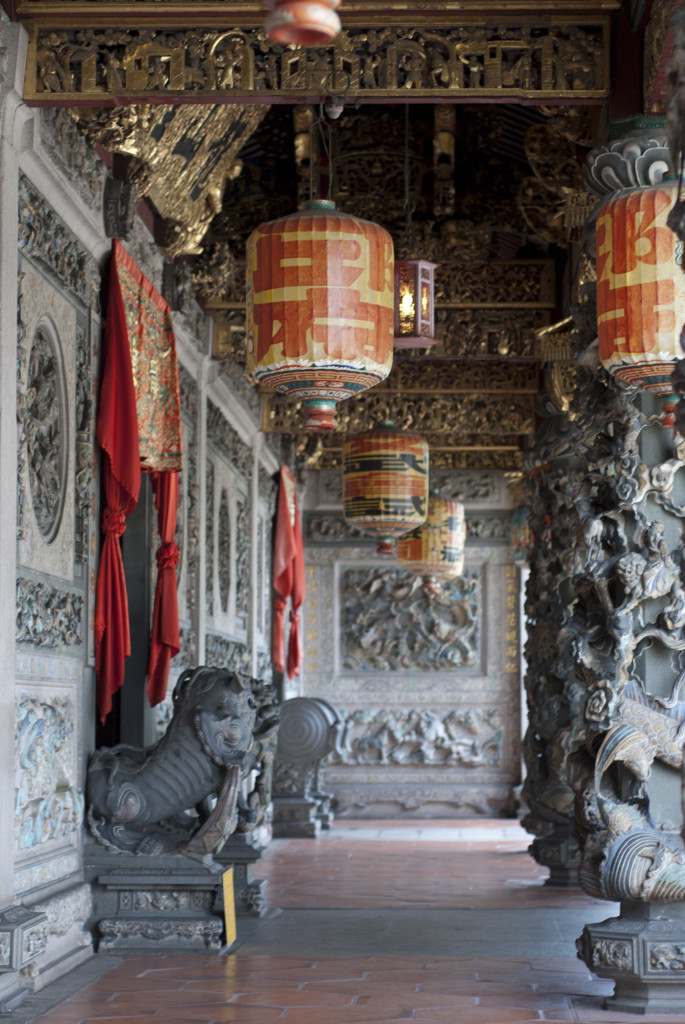
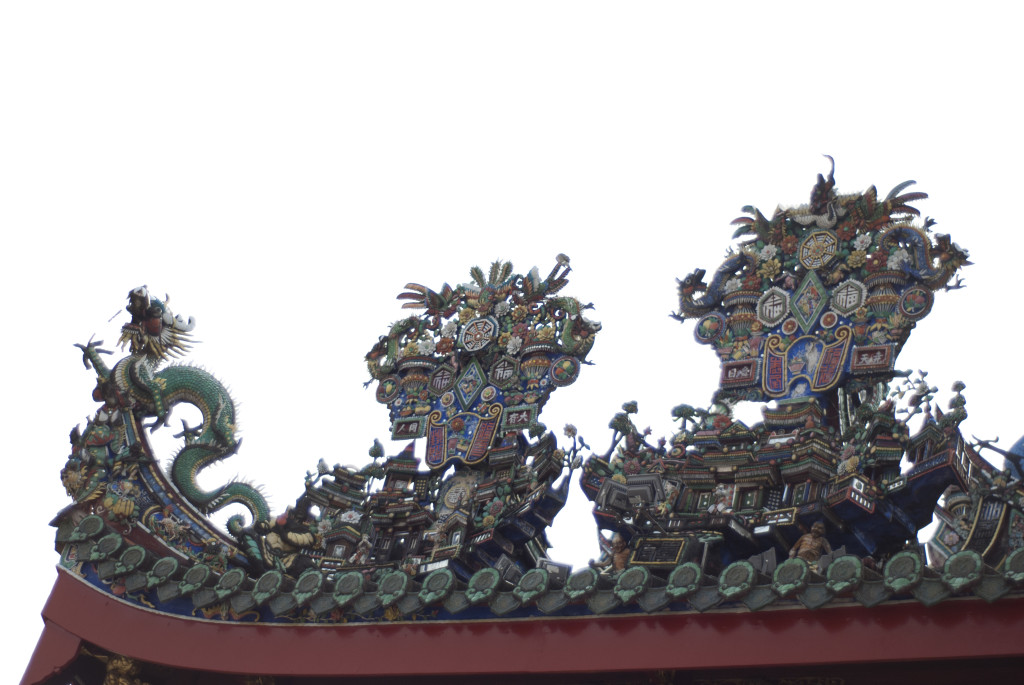

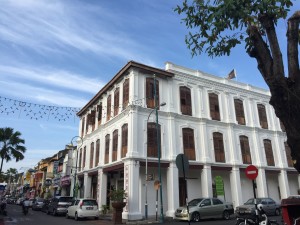
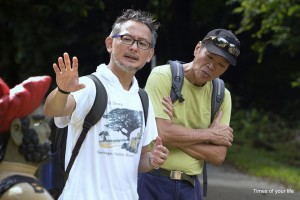
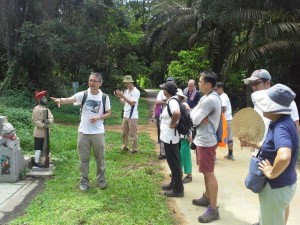
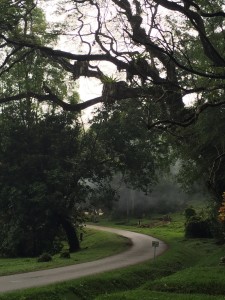
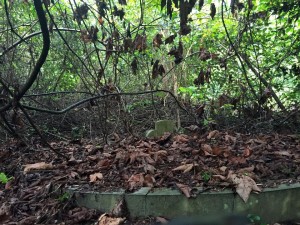
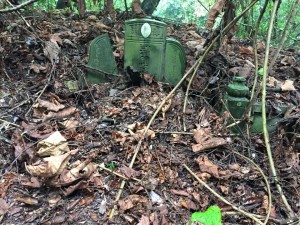
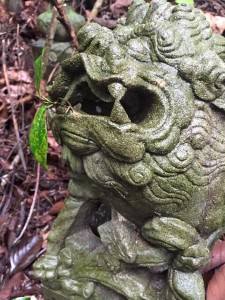
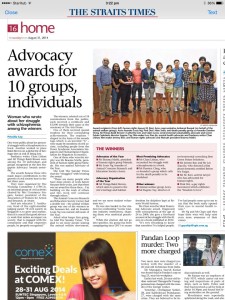
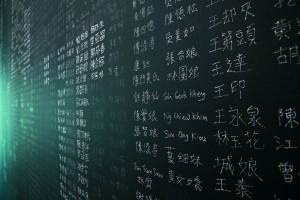
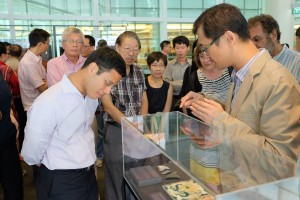
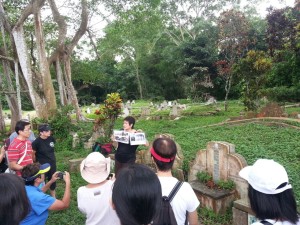
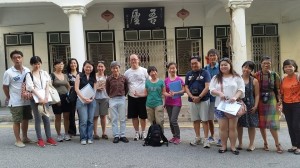
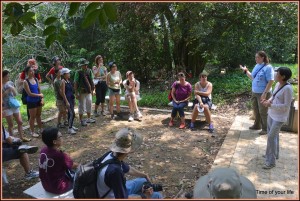

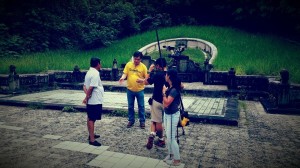
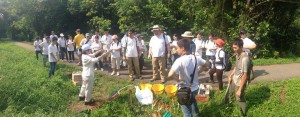
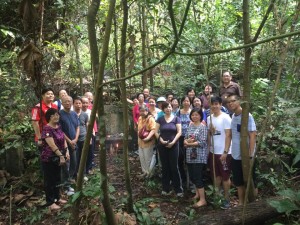
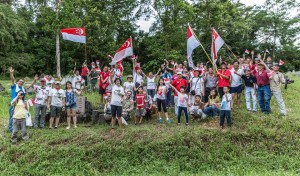
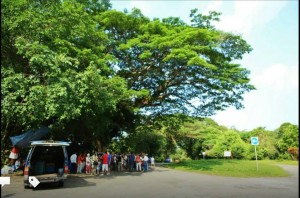
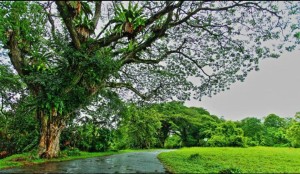
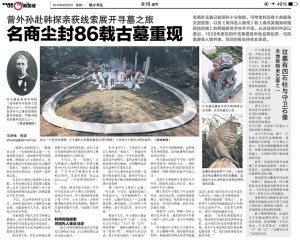
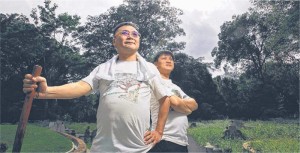
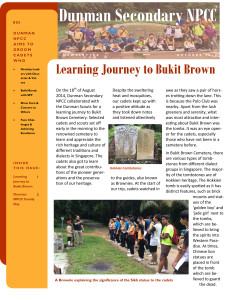
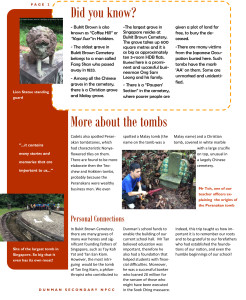
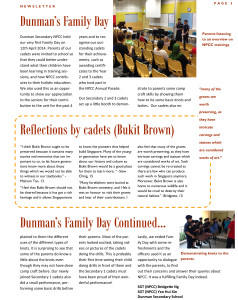







Recent Comments